Four lifestyle factors are proven to determine your posture, weight, overall health, and the ability to feel joy often.
The four lifestyle factors that will improve your daily quality of life are:
- strategic physical activity
- abundant, deep sleep
- anti-inflammatory diet
- positive thinking
What follows are smart strategies and useful tips for those lifestyle factors significantly reducing the risk of impaired posture, accelerated aging, and disease.
Also included, a motivational video with postural exercises to help you get started.
See additional sources listed below if you want to dig deeper into the science behind these recommended lifestyle factors.
1. Move Your Body in Specific Ways (and More Often) for Better Posture
A European Journal of Social Psychology study established that how students rated themselves on their future careers depended on the posture they had as they were writing about their traits:
- Students in the upright, confident position trusted their thoughts,
- while students told to sit in a poor, slouchy posture did not trust their own thoughts.
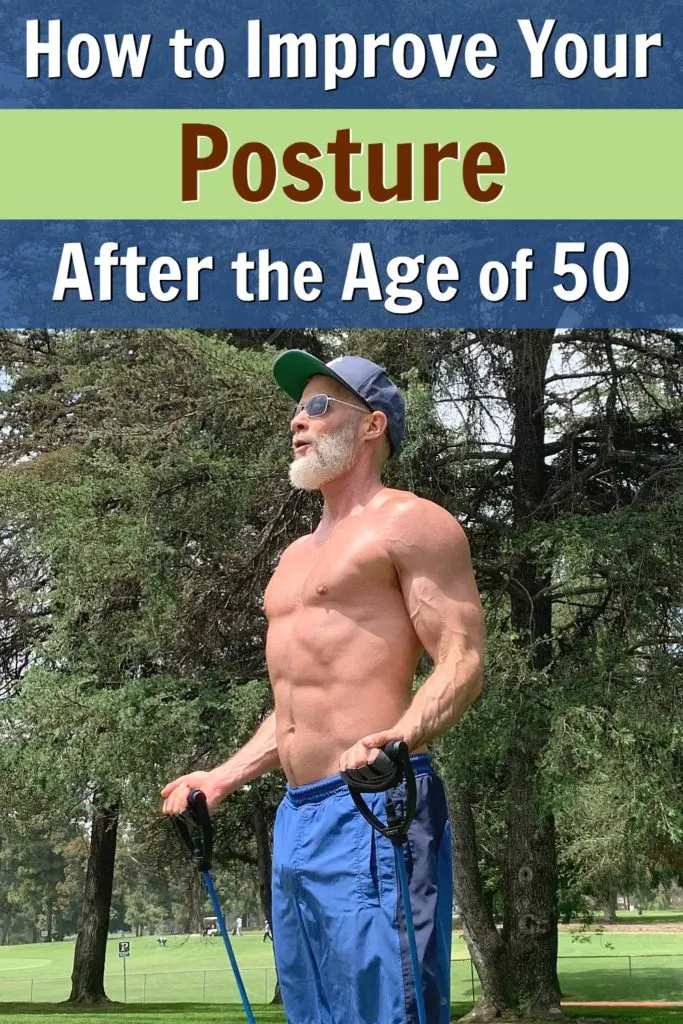
Experiments within the study also revealed that sitting in a collapsed, helpless position – poor posture – makes it easier for negative thoughts and memories to appear within a person’s mind.
Sitting in an upright, powerful position – an aligned posture – makes it easier to have empowering thoughts and memories.
When researchers cross-referenced time seated with health outcomes, they found that those who sat the most doubled their risk of developing diabetes and had a 147% increase in their risk for cardiovascular disease. (The CDC reports 100 million Americans now have diabetes or pre-diabetes.)
Another study in Australia establishes that, after age 25, each hour slouched watching tv decreases a viewer’s life expectancy by almost 22 minutes.
Aligned Posture Helps You Appear (and Become) Healthier and More Competent
I had a job for four years that involved sitting at a computer for 50 to 60 hours a week. It did terrible things to my spine.
It even influenced my ability to digest food properly.
Ultimately, I was left with a kyphotic “hump” at the top of my spine.
When someone showed me a candid photo of myself in profile that they had snapped, I was distressed to see how terrible my posture had become.
Fortunately, I was motivated to work more sensible hours from that point forward.
I also sold the chair I had been sitting in for those four years. I got a standing desk instead and began attending weekly pilates and yoga classes.
Perhaps what helped most was improving the mobility of my shoulders and pectorals while simultaneously strengthening my posterior chain muscles – such as my rear deltoids, rhomboids, and lower back muscles.
Improving Your Body Composition
Are you hoping to:
- sculpt your physique into a new and improved silhouette?
- create a more aligned posture, reducing adipose tissue, and developing muscle tissue in critical areas?
If so, you might need stronger muscles in the posterior chain of your body to stand upright.
In particular, weak posterior deltoids – the muscles along the back of the shoulder – can impact posture significantly.

To become stronger, it can be helpful to remember that muscles are more sensitive to protein intake after exercise.
The first two hours after your workout are the most sensitive:
- you’ll want to consume quality protein within that 2-hour timeframe.
- If you had a sizeable pre-workout meal, then post-workout protein is less crucial – as that earlier protein is likely still available to your body.
Remember that excess protein can convert to glucose within the body, so to avoid detrimental blood-sugar spikes, you need to find the right amount of protein that fits your body uniquely best – not too much, but not too little.
Hypertrophy specialist Dr. Brad Schoenfeld reports that “research gives you guidelines, but it’s not going to tell you exactly what to do. There’s no such thing as a cookie-cutter prescription that will work for everyone.”
For many people, 20 grams of quality protein post-workout is plenty to support muscle tissue and overall health. However, someone with light body weight and a different metabolism and activity level might require less. At the same time, a 6-foot-tall professional athlete might benefit by having more – even as much as 50 grams of protein post-workout.
Seeing your medical doctor for standard blood lab work every six months can help guide your nutritional decisions.
For example, if your fasting glucose number is low and your kidney markers are within normal ranges, that could indicate that you’re on the right track. Ask your doctor.
Get the Posture of a Superhero
Can you add lean muscle without adding fat at the same time?
“It’s absolutely possible to “recompense” – to lose fat and gain muscle simultaneously, especially for overweight people new to training,” says Schoenfeld. “It’s more difficult for experienced athletes, and generally, you’re not going to maximize muscle gains unless you’re gaining some small degree of fat simultaneously.”
This is why bodybuilders are often either on a “bulking regimen” or a “cutting regimen.”
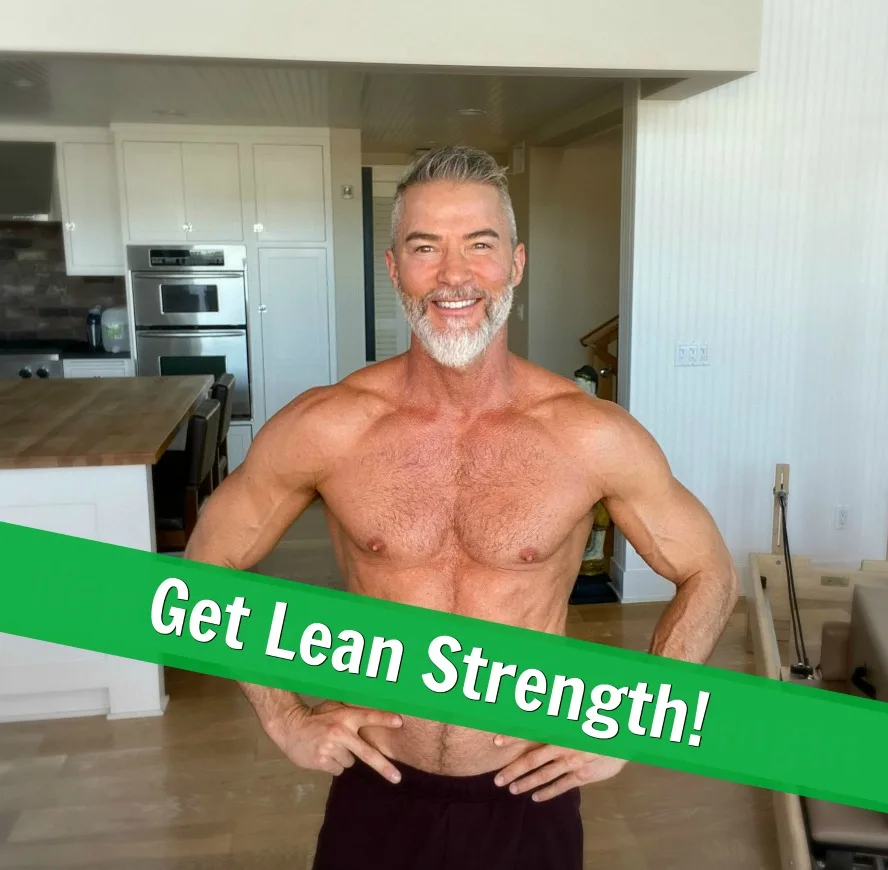
The more years an athlete trains, the better understanding he or she acquires of their body – and they often begin to develop a “sense” of how to increase caloric intake enough to add lean muscle to their bodies without adding too much fat at the same time. Even so, counting calories and tracking macros can prove extremely helpful.
Women sometimes think that they don’t want any added muscle; they believe they just want to lose fat.
However, in the absence of fat, it’s muscle that gives the body shape and makes the skin taut.
Some women are “skinny fat,” meaning that while their body fat percentage is technically low, their heart, lungs, skeletal system, and musculature might be weak and even unhealthy. It’s vital to make resistance training a part of any self-care regimen, particularly after age 50.
Researchers have established that intelligent fitness conditioning can lengthen the years you can live in good health – in other words, working out improves your healthspan.
By testing the maximum amount of oxygen a person can use during a workout:
- scientists have established that cardiovascular health, endurance, balance, muscle strength, nerve conduction, and reflexes all improve with exercise.
- In one recent human-physiology study at King’s College London, 125 middle-aged people who like to bicycle were tested. Their results were far superior to the average numbers for typical middle-agers. Their test results were the same as healthy young adults!
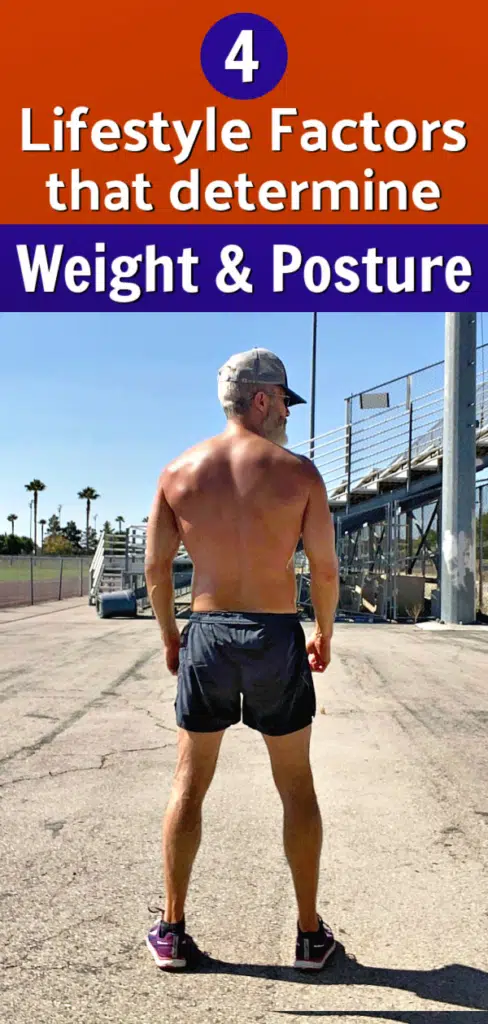
Hypertrophy is the act of creating muscle tissue within the body.
There is a connection between muscular development and correct posture. You need muscle to stand tall.
Remember, a longer health span means aging with the fewest impairments and a minor deterioration of functioning. Consistent, strategic fitness training makes that possible. It also helps improve your posture.
Maintaining proper spinal alignment, strength, and flexibility is a modifiable habit, and good posture is a lifestyle factor that impacts your overall quality of daily life.
2. Begin an Anti-Inflammatory Diet for Better Posture
Unfortunately, sometimes hypertrophy and longevity work against each other.
In other words, what’s good for sculpting muscle in your body might not be suitable for your overall healthspan.
This is why it’s essential to understand the unique needs of your own body instead of always relying on formulas based on nutritional averages for the general population.
Medical scientists are concerned that today’s children in the US might be the first generation expected to live shorter lifespans than previous generations.
Autoimmune diseases – such as Alzheimer’s, MS, osteoporosis, and diabetes (Type 1) – have become the third leading cause of death behind heart disease and cancer.
Tom O’Bryan, the author of The Autoimmune Fix, explains that millions of people suffer from autoimmunity but don’t realize it.
Autoimmune often begins with weakness – which then affects posture. Other symptoms are weight gain, brain fog, mood problems, and skin irritations, yet it can sometimes take decades for a distinct diagnosis to arise.
O’Bryan asserts that autoimmunity is a spectrum, and many people experiencing general malaise are already on it.
The good news is that many autoimmune conditions can be reversed through lifestyle upgrades.
For example, those who remove sugar, grains, and dairy from their daily diet often experience a dramatic improvement in symptoms.
Health advocate Chris Kresser reports that 1 in 2 Americans has a chronic disease.
“Our only hope,” explains Kresser, “is to figure out a way to reverse disease instead of just suppressing symptoms. We know now that 85% of the disease risk comes down to environmental or behavioral factors. That means only 15% of disease risk is genetically driven.”
“Human beings evolved in an environment of food scarcity,” states Kessler. “We are hard-wired to seek out calorie-dense foods and ‘rewarding‘ foods that make you want to keep eating that food. Stocking up on calories would allow us to survive a period of famine in our ancestral environment but set us up for failure in this modern era.”
Consumption of products the body finds irritating can create inflammation – a scenario in which a body becomes hyper-vigilant and starts attacking healthy tissues mistakenly. This can create fatigue, which then increases the chances of weak posture.
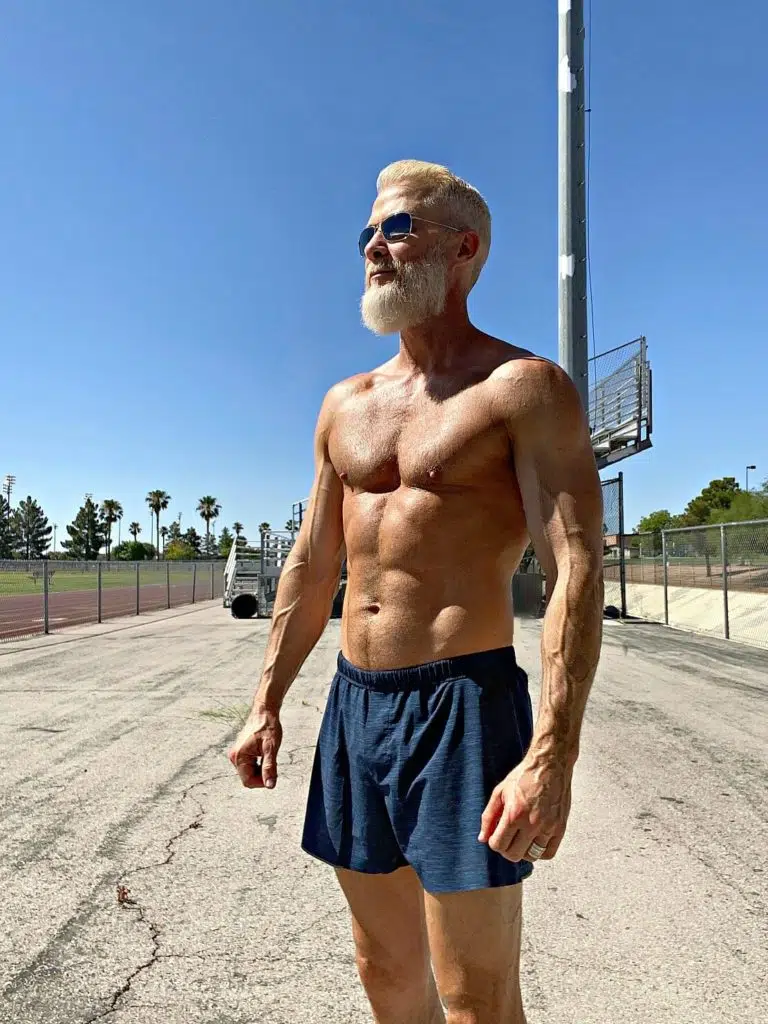
An anti-inflammatory diet is a strategic course of daily eating that reduces the ingestion of irritating foods.
For example, in an ideal era, gluten is a protein that would typically be tolerable for most people – but because modern lifestyles are problematic for the human body overall, many have compromised immune systems. Consequently, gluten is becoming a further irritant to many.
Additionally, grains and flours contain lectins – the irritants plants create to discourage insects and other predators – that can antagonize an intestine’s lining and microbiome in bodies with an already fatigued immune system.
Solution?
Eat more real food.
Eating more grass-fed meats and vegetables while simultaneously eating less processed or refined store products that come in bags, wrappers, and cans is beneficial.
Just about any body composition problem you have is a diet problem, not a training problem.” –– Chris Shugart
Additionally, it’s a good idea to start thinking of your gut as a garden where you grow good things and keep out the pests.
“The purpose of the gut is to serve as a selective barrier that determines what gets in and stays out,” explains Kresser. “Everything we eat is either absorbed or eliminated as waste, and if the barrier becomes permeable in a non-selective way – meaning it loses the ability to make appropriate decisions about what gets in and out – then food proteins that would otherwise be benign, instead get absorbed as large particles before they’ve had a chance to break down to smaller particles, and that can wreak havoc.”
TIP: Some fiber has a mechanical effect of pushing waste matter through the bowels in a timely way, however other fiber can be can also be used as food by our beneficial gut bacteria. Vegetables are a source of fiber, but be sure to include some fermented foods and resistant starches.
TIP: For resistant starch, I steam or boil diced sweet potatoes once a week and store them in a sealed glass container in the refrigerator. Cooling a starch after cooking helps make it “resistant” and helpful to your gut.
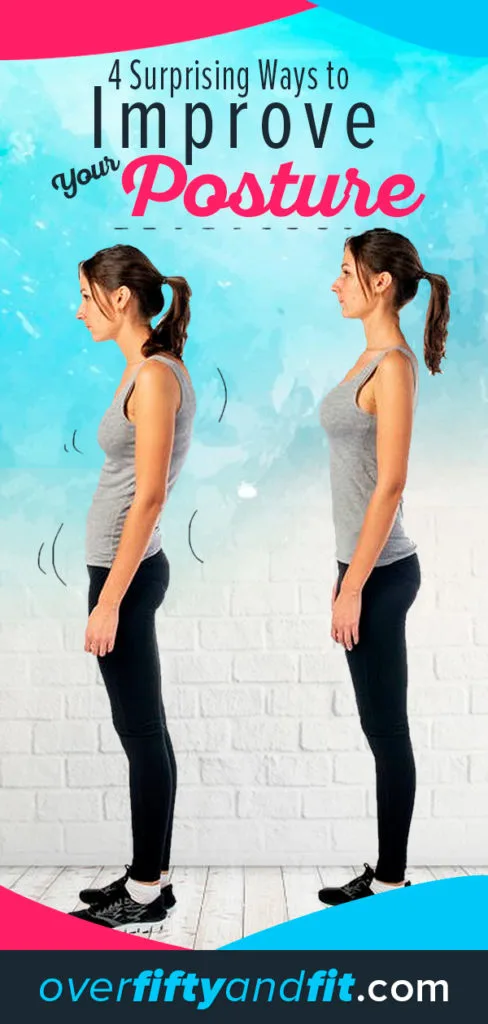
Resistant starch won’t break down and absorb to become glucose. It’s a way to feed your good bacteria without experiencing a blood-sugar spike. I eat a few tablespoons of this each day. It tastes fine, but I don’t think of it as food – I think of it as medicine.
Nutrition is a modifiable habit, and an anti-inflammatory diet is a lifestyle factor that impacts wellness, including posture.
3. Sleep More Deeply Each Night for Better Posture
One-third of Americans are averaging less than 6 hours of sleep a night, which – in turn – impacts their hormone production, brain chemistry, willpower, the ability to feel satiated, and their willingness to stand with an aligned posture.
“You could easily be missing a half-hour of sleep regularly and not realize it,” explains Sleep Researcher Dan Pardi. “When I started tracking my sleep, I had been telling everyone I was getting 8 hours a night. After I measured it for two months, it turns out I was getting 7.”
Sleep is a dynamic and complex process. Our brains and bodies move between sleep stages during the night. Each stage – and the transitions between stages – has a purpose, such as memory formation, hormone release, and immune system calibration.
Set a firm intention to sleep better each night.
Many find it helpful to start simply by deciding on a fixed bedtime.
Keep in mind that the human brain behaves impulsively at nighttime, and it’s easy to keep stretching 30 minutes past your bedtime.
Knowing ahead of time that you’ll be tempted to stay up past your bedtime will make it easier to recognize when you’re about to do it and stop it.
Some also find it helpful to use a sleep-tracking app like Sleep Cycle.
Keep in mind that some people with adrenal challenges (and there are many of us) experience evenings in which we are at first tired; however, if we miss that first sleepy window, our bodies move from tired to “wired,” and then it becomes harder to fall asleep quickly and deeply. Try not to miss your first “sleepy window.”
Specialized cells within the human eye receive information about light and then communicate with the “master clock” inside the brain that lets other parts of the body know what time of day it is.
For most of human history, our bodies were naturally calibrated with waking at sunrise and settling down at sunset. Today, we’re not exposed to enough bright light during daylight hours, yet we are overexposed to artificial light in the evening. “Desynchronized circadian rhythms can lead to cardiovascular disease, cancers, metabolic impairments, and system-wide, totally pervasive issues,” reports Pardi.
Possible solutions include:
- blackout curtains
- light-blocking sleep eye-masks
- beeswax earplugs
- removing stimulants from the daily diet
- getting outdoors each day for fresh air and sunlight
- removing electronic devices from the bedroom
- amber-colored light bulbs for nightstand lamps
- installing the Flux app on your laptop computer
Sleep timing, intensity, and duration are all modifiable habits – and sleeping well consistently is a lifestyle factor that impacts well-being and posture.
4. Think Positive Thoughts Daily
A growing, scientifically valid body of research is showing that optimistic people are generally better off in life than pessimists:
- For people over 50, every 10-point increase in a person’s score on an optimism scale results in a 19% reduced risk of early death.
- Johns Hopkins scientists have established that cheerful people with a family history of heart disease are one-third less likely to have a heart attack than those with a negative outlook on life.
- UCSF researchers proved that people with immunodeficiency disease who practiced positive thinking carried a lower load of virus than those who think negatively.
- A Denmark hospital study concluded that those patients whose moods were overall more positive were 58% more likely to live at least another five years.
- The Yale School of Public Health demonstrated in their large-scale study that having a positive viewpoint benefits health outcomes and longevity.
Cheerful people tend to have better posture. People with sour dispositions tend to be slouchy.
Negative thoughts are often repetitive – variations of similar thoughts you’ve had many times before.
You can learn how to pivot.
Pivoting is a conscious mental process in which you objectively witness yourself having a negative thought and then replacing it with a positive one.
It takes a bit of practice, but you will get better at pivoting over time if you maintain a clear and focused desire to become a person with a brighter, more positive outlook on daily life.
Lifestyle factors are changeable patterns of behavior and ways of living that can significantly influence wellness.
Each of the above four lifestyle factors can improve how you feel, the posture of your spine and how you appear to others, and – perhaps most importantly – the length of your healthy lifespan.
Combine all four of these lifestyle factors for maximum impact.
Additional Sources about Improving Posture and Weight:
Falling Behind: Lifespan in US Counties Put Into International Context – https://pophealthmetrics.biomedcentral.com/articles/10.1186/1478-7954-9-16
Doctors Weigh-In on Grain Consumption – https://www.amymyersmd.com/2017/06/the-problem-with-grains-and-legumes/
John Hopkins Medical Researchers Say Positive Thinking Means Better Health – https://www.hopkinsmedicine.org/health/healthy_aging/healthy_mind/the-power-of-positive-thinking
Joe Rogan Experience Podcast with Chris Kessler – http://podcasts.joerogan.net/podcasts/chris-kresser
Scientists Establish that Positive Thinking Improves Health – https://www.nytimes.com/2017/03/27/well/live/positive-thinking-may-improve-health-and-extend-life.html
Chris Kessler and the Revolution to Reinvent Healthcare –https://unconventionalmedicinebook.com/wp-content/uploads/2017/10/Kresser-book-unconventional-medicine-free-preview-chapters.pdf
Sleep and Aging – http://blog.dansplan.com/the-state-of-the-art-in-sleep-and-aging-guest-bryce-mander-ph-d-uc-berkeley/
Results from Journal of Physiology Studies on Exercise and Healthspan – https://www.washingtonpost.com/news/to-your-health/wp/2015/01/09/exercise-improves-your-healthspan-but-why-that-is-remains-a-mystery/?utm_term=.b3a78cc40f57
The Current Science Behind Happiness – http://www.pursuit-of-happiness.org/science-of-happiness/positive-thinking/
Circadian Biology and Human Behavior Around Sleep Patterns – https://www.amymyersmd.com/2013/06/tmw-episode-10-sleep-expert-dan-pardi/
Proven Strategies for Hypertrophy – http://daily.barbellshrugged.com/schoenfeld/
Why Diet Improvements are a Tough Pill to Swallow – https://www.t-nation.com/diet-fat-loss/tip-an-inconvenient-truth-about-your-diet
Established Connections Between Mood and Posture – https://www.fastcompany.com/3041688/the-surprising-and-powerful-links-between-posture-and-mood
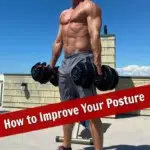
Leg Day: A Lower-Body, Functional-Training Workout • Over Fifty and Fit
Saturday 4th of January 2020
[…] as you crunch, maintaining length in the spine as you draw your navel in […]
The 4 Lifestyle Factors that Determine Posture and Weight
Wednesday 11th of September 2019
[…] Read More […]
Mat Exercise Program for Strength and Flexibility – A No-Gym Workout
Monday 12th of August 2019
[…] legs are long, toes pointed – keep your feet up off the mat high enough to keep your lower back bolted […]
Resistance Band Workout for Upper Body • Over Fifty and Fit
Thursday 13th of June 2019
[…] And if there’s one thing I’ve learned about the human body over the last 53 years of my life, is that it adapts to movement patterns quickly and then stops developing muscle as readily for overly familiar patterns. […]
The Pilates Chair Workout • Over Fifty and Fit
Monday 6th of May 2019
[…] back. Which is harder? Where is the right spot on the chair to sit, in order to make the exercise maximally effective for […]